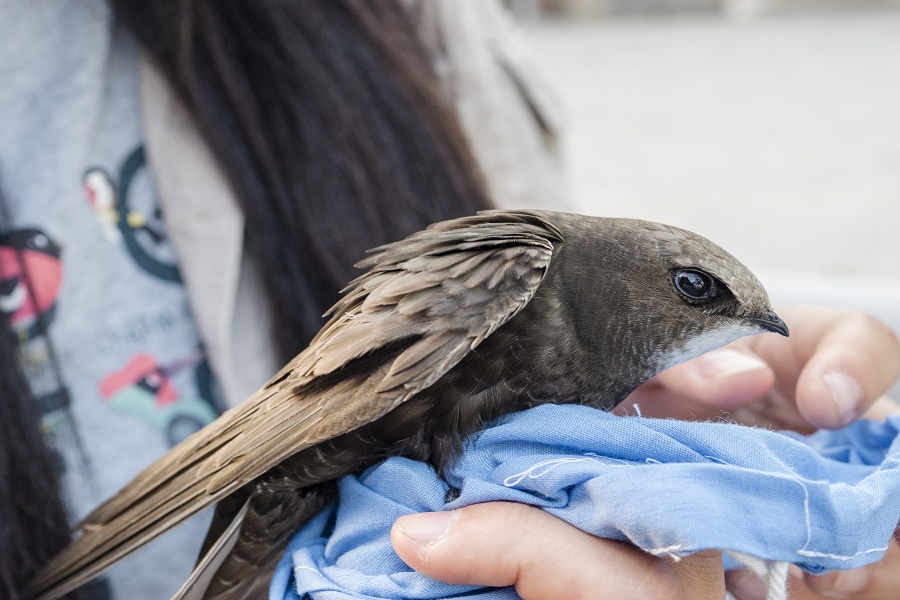Zhengyang Gate and Beijing Swifts

Looking south from Tiananmen Square, you cannot miss the majestic 43.65-meter-high Zhengyang Gate. If you climb the gatehouse, you’ll be greeted by a massive archery tower across the street.
The gatehouse and archery tower of the Zhengyang Gate were part of a city gate complex featuring both defense and etiquette functions in the Ming (1368-1644) and Qing (1644-1911) dynasties. Built in 1419, the 17th year of the Yongle reign in the Ming Dynasty, the Zhengyang Gate, nicknamed the “Capital Gate,” once guarded the southern entry to the Inner City and would only open when emperors passed through to the Outer City to make offerings at the Temple of Heaven or to conduct farming at the Temple of Agriculture. Initially, only the gatehouse was built, and the archery tower and other buildings followed in 1439, the fourth year of the Zhengtong reign of the Ming Dynasty.
In 1915, Zhu Qixian, then the head of the Ministry of Internal Affairs and the supervisor of the Beijing municipal government in the Republic of China period (1912-1949), suggested that the Zhengyang Gate, Chongwen Gate, and Xuanwu Gate be reconstructed to make more space for the congested environment worsened by the nearby Peking-Mukdun Railway and Beijing-Hankou Railway. German architect Curt Rothkegel was hired to design the reconstruction of the archery tower of the Zhengyang Gate, and he incorporated Western architectural elements such as a zigzagging horse path on the north side and the latest building materials like reinforced steel and concrete. Today, this iconic landmark is a beautiful sight to behold on Beijing’s Central Axis, shining with Chinese and Western wisdom.

The close-up of a Beijing swift.
Beijing swifts hovering, mating, and living around the gatehouse are also witnesses to the 600-plus-year history of the Zhengyang Gate. In 1870, this kind of bird was first discovered and named by British biologists visiting the Zhengyang Gate as a new swift subspecies. The gatehouse of the Zhengyang Gate is the largest habitat of Beijing swifts in the city. Due to its huge structure and the management authority’s acute attention to biodiversity protection, numerous Beijing swifts gather there every year to nest and multiply. About 50 nests are built on the crisscrossing pores of the beams.
To smooth the Central Axis application for the UNESCO World Heritage status, a renovation project was kicked off in the gatehouse and archery tower of the Zhengyang Gate. Protecting Beijing swifts, the living culture on the Central Axis, attracted the greatest concern among others. On-site surveys were carried out to understand the living habits, nest positions, and flying itineraries of Beijing swifts. During the renovation process, artificial nests and flying corridors were set up. After completion, the nests and living environment of Beijing swifts will be restored.
Beijing swifts play a positive role in controlling agricultural and forestry pests and maintaining the urban ecological balance. To observe the whole process of how Beijing swifts lay and hatch eggs, a scientific research team set up seven pieces of high-definition monitoring equipment on the top floor of the gatehouse in 2018 to conduct 24-hour observation. Precious videos of Beijing swifts nesting, laying eggs, hatching, and maturing were recorded. At the invitation of the 2020 UN Biodiversity Conference (COP15), the Zhengyang Gate Management Office participated in an on-site exhibition in the Beijing exhibition area of the China Pavilion.
The gatehouse and archery tower of the Zhengyang Gate will soon be reopened to the public after renovation. Seeing the return of the Beijing swifts from atop the gatehouse is like checking the pulse of history.